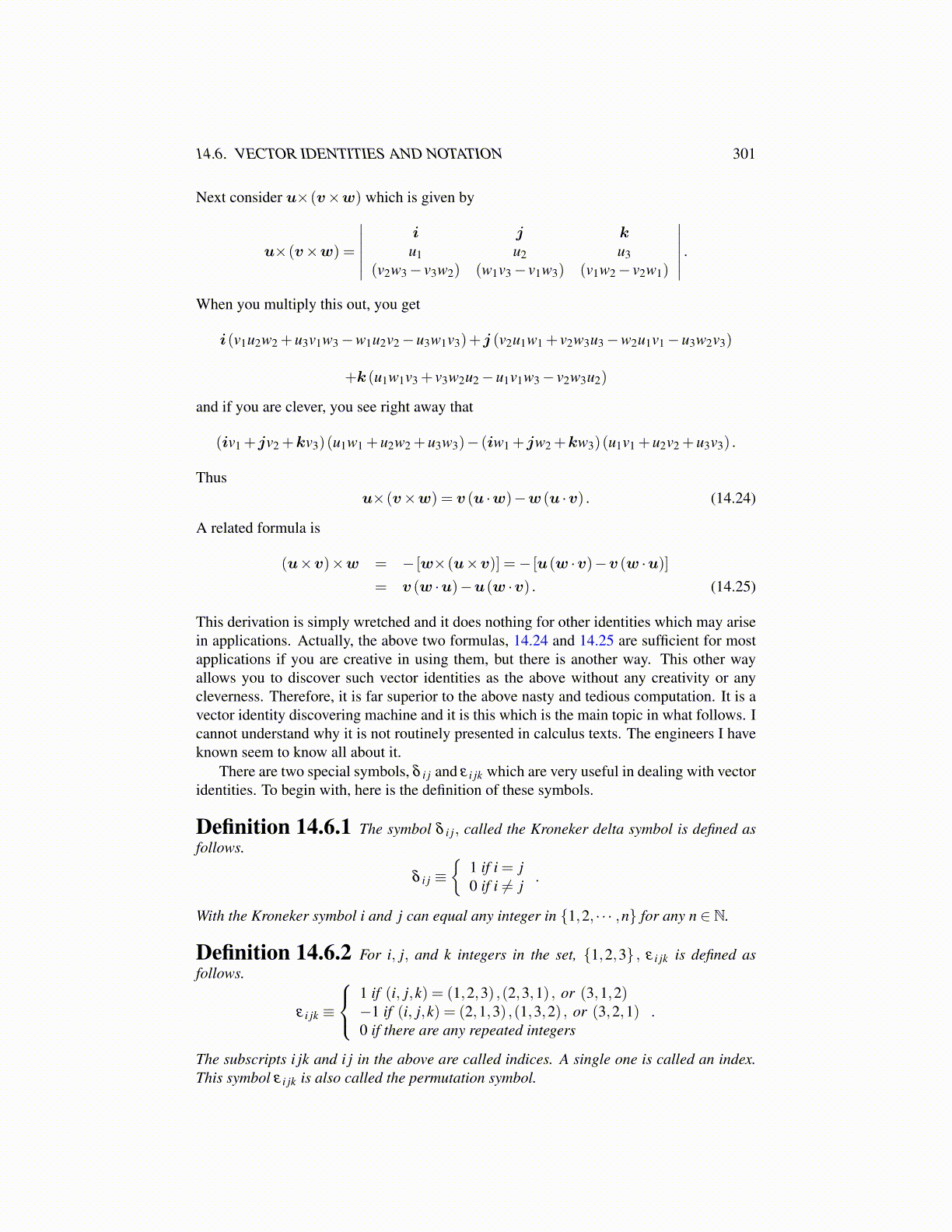
14.6. VECTOR IDENTITIES AND NOTATION 301
14.6 Vector Identities and NotationTo begin with consider u× (v×w) and it is desired to simplify this expression. It turnsout this expression comes up in many different contexts. Let u= (u1,u2,u3) and let v andw be defined similarly.
v×w =
∣∣∣∣∣∣i j kv1 v2 v3w1 w2 w3
∣∣∣∣∣∣= (v2w3 − v3w2) i+ (w1v3 − v1w3)j+ (v1w2 − v2w1)k
Next consider u×(v×w) which is given by
u×(v×w) =
∣∣∣∣∣∣i j k
u1 u2 u3(v2w3 − v3w2) (w1v3 − v1w3) (v1w2 − v2w1)
∣∣∣∣∣∣ .When you multiply this out, you get
i(v1u2w2 +u3v1w3 −w1u2v2 −u3w1v3)+j (v2u1w1 + v2w3u3 −w2u1v1 −u3w2v3)
+k (u1w1v3 + v3w2u2 −u1v1w3 − v2w3u2)
and if you are clever, you see right away that
(iv1 +jv2 +kv3)(u1w1 +u2w2 +u3w3)− (iw1 +jw2 +kw3)(u1v1 +u2v2 +u3v3) .
Thusu×(v×w) = v (u ·w)−w (u ·v) . (14.24)
A related formula is
(u×v)×w = − [w×(u×v)] =− [u(w ·v)−v (w ·u)]= v (w ·u)−u(w ·v) . (14.25)
This derivation is simply wretched and it does nothing for other identities which may arisein applications. Actually, the above two formulas, 14.24 and 14.25 are sufficient for mostapplications if you are creative in using them, but there is another way. This other wayallows you to discover such vector identities as the above without any creativity or anycleverness. Therefore, it is far superior to the above nasty and tedious computation. It is avector identity discovering machine and it is this which is the main topic in what follows. Icannot understand why it is not routinely presented in calculus texts. The engineers I haveknown seem to know all about it.
There are two special symbols, δ i j and ε i jk which are very useful in dealing with vectoridentities. To begin with, here is the definition of these symbols.
Definition 14.6.1 The symbol δ i j, called the Kroneker delta symbol is defined asfollows.
δ i j ≡{
1 if i = j0 if i ̸= j .
With the Kroneker symbol i and j can equal any integer in {1,2, · · · ,n} for any n ∈ N.